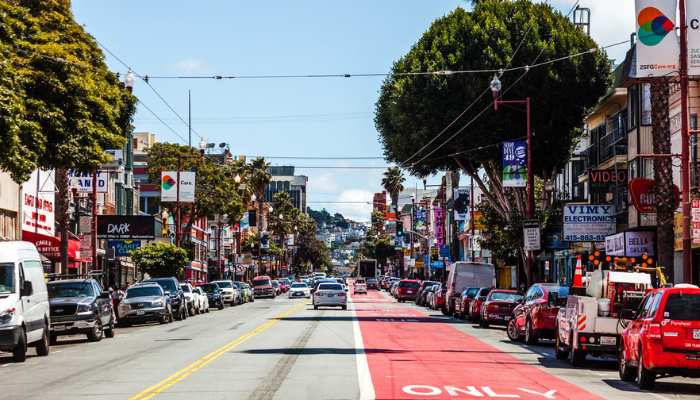
11 Oct The Mission District in San Francisco is on the cusp of another technological wave
For years, this vibrant Latino enclave has been the residence of numerous immigrant families, long-term inhabitants and artists. However, over the last decade, this diverse neighborhood has also become a home to tech giants and affluent residents like Mark Zuckerberg. Alongside its old Victorian homes and well-worn dive bars, there are just as many new loft spaces and upscale restaurants catering to wealthy professionals. Even after weathering previous waves of gentrification, it now seems the community is preparing for another influx, driven by the emerging artificial intelligence industry.
Derek Daniels, a regional research director at Colliers International, a multi-billion dollar investment management firm, playfully refers to the Mission neighborhood as “Area AI,” a nod to Area 51, emphasizing the concentration of the AI sector in this region, Daniels pointed out, “Despite the prevailing discussions about a tech slowdown, it’s worth noting that the AI segment is witnessing substantial growth in investment
Despite the evolving landscape in the wider tech sector, a map shared by Colliers with SFGATE vividly showcases the gradual rise of the AI industry in one of San Francisco’s most ethnically diverse neighborhoods. As an example, Adept AI, founded in 2022, operates its offices just a short and convenient 15-minute walk from the 16th Street BART Station. OpenAI, a renowned AI company, is situated nearby on Florida Street, and other enterprises such as Zoox, Ideo, and Embark Trucks are strategically concentrated within the same area of the Mission District.
John Jensen, Colliers’ executive vice president, notes that OpenAI plays a central role in this neighborhood’s tech ecosystem. Sonia Kastner, CEO and co-founder of Pano AI, stated that, having resided and worked in the Mission since 2016, the neighborhood represents the ideal location for a startup like theirs. The area provides versatile office spaces, easy access to highways, and a lively urban environment for their employees, customers, investors, and policymakers.
Soran Mofti, a manager at Remoov, a local company specializing in decluttering and reselling second hand furniture, has observed shifts in the tech environment based on the volume of clear-outs they’ve managed. Many startups are transitioning to remote work or relocating to alternative neighborhoods, with the Mission being a particularly popular choice. Jensen noted that a significant portion of industry professionals both work and reside in the neighborhood and frequent its social spots. Mofti concurs, highlighting the appeal of its proximity to restaurants and bars in contrast to downtown.
Jensen predicts that office space prices will increase, but he believes this demand will ultimately benefit the community’s small businesses and residents. Unlike downtown San Francisco, the Mission has a wealth of foot traffic, contributing to its vibrancy. Tech’s presence, he asserts, will only enhance it further.
Nonetheless, Mofti expresses apprehension that these new tech companies might lead to the displacement of long-standing traditional businesses within this blue-collar neighborhood, traditionally known for housing furniture warehouses and brick-and-mortar design shops.
However, major investment firms hold a different perspective. “Every day, we’re seeing groups evaluating expansion in this area. And that’s a good thing,” Jensen emphasized. “San Francisco needs positivity, and these groups can provide that.”


